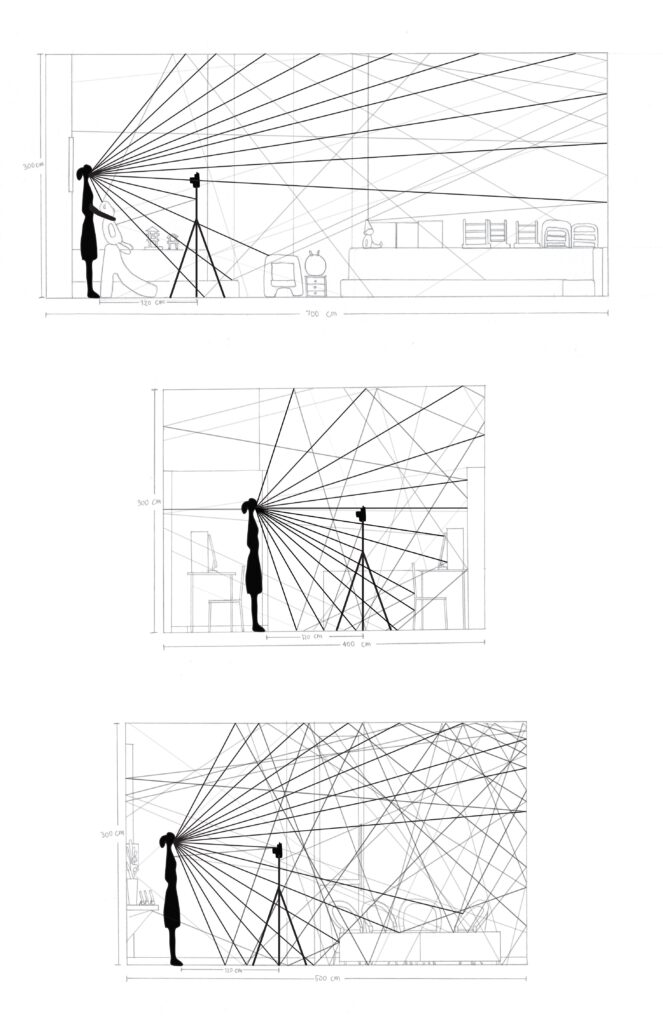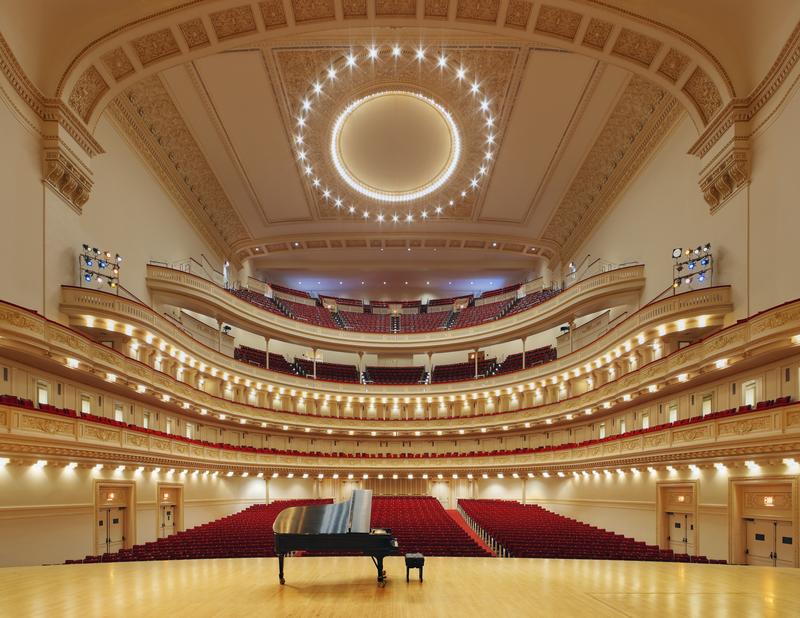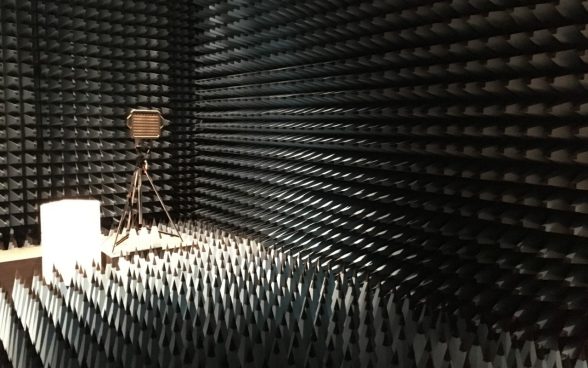Our project is a comprehensive overview of architectural acoustics. This website will be a consolidation of our research, and serve as an expansion on some of the ideas from our presentation
What is Architectural Acoustics?
Defined in the literal sense of the word, architectural acoustics is “(the) relationship between sound produced in a space and its listeners, of particular concern in the design of concert halls and auditoriums”. While this might seem slightly removed from the real essence of architectural acoustics, the relationship between sound and the listener is the essence of the craft. Concert halls, auditoriums, venues, theaters and like are the obvious applications of architectural acoustics; spaces meant for performance and consumption of music need to be built to allow the best possible sound from source to listener. Thus, architectural acoustics can optimize these spaces in terms of materials, layout, size, shape, and more.

While very useful from these types of spaces, architectural acoustics is not limited to musical applications. It is also very relevant in everyday life, being an integral part to lots of constructions such as large public spaces, workplaces, residential areas, and more. On this website, you will find some examples of how architectural acoustics can be applied to a variety of different situations for a variety of different purposes.
Conceptual Overview: T60 and Absorptivity
This section will review a couple of fundamental concepts that are integral to architectural acoustics and the later examples, the first of which is T60. This is a commonly used metric that describes the required time for a sound to decay by 60 dB. This might seem like an arbitrary metric, this number is actually a very pertinent and useful description of how sound travels in an area. T60 varies based on a variety of things, including volume of the space, surface area of the space and the things within it, the texture of the space and the things in it, and the material of all these things.

As it turns out, the material is a very important part of this value, as the structure of material changes how much sound it absorbs or reflects. This is usually expressed in terms of the absorptivity coefficient (α) which is a ratio of absorbed sound to reflected sound. This means a higher coefficient means a material absorbs more sound than it reflects, and vice versa. This knowledge is invaluable when building a place with architectural acoustics in mind, as it allows one to tailor the way the sound travels by being selective about the materials used in the construction.
Prevalent Applications
As was stated earlier, architectural acoustics has much use beyond the optimization of concert halls and musical venues. Another application is its use in noise suppression for loud, busy and/or crowded spaces, such as offices and train stations. Employees in busy places need to be able to communicate with each other without the din of activity around them being too deafening. People in train stations need to be able to hear the announcements of arrivals and departures, as well as messages on the intercom.

Another interesting use of architectural acoustics is in anechoic chambers, which leans more towards the purpose of research and innovation rather than common pragmatism. These will be elaborated on in a later example, so the description here won’t too in-depth. Finally, architectural acoustics can apply to some very unique applications, one of which is building safety. The same concepts that help optimize the noise of a venue can also be used to increase the stability and safety of massive buildings. We also have a more specific example of this presented later, so please read on.
The Different Types of Acoustics: Passive Acoustics
Passive Acoustics refer to the materials which make up a space and their effects on how sound reverberates within.
While there are some materials which are manufactured specifically for soundproofing (i.e. acoustic tiles, bass traps, etc.), every building material possesses the ability to absorb sound waves. This is quantified by the material’s absorption coefficient, which is a constant value between 0 and 1. The larger this value, the more sound a material will absorb. Therefore, a room comprised mainly of materials (walls, furniture, floors, etc.) with larger absorption coefficients will have a shorter RT60 and vice-versa.
Passive Acoustics also refer to the shape and size of a space, or any other physical aspects which would affect its reverberation time. Buildings and rooms with unique and/or asymmetrical shapes will cause sound to reverberate differently than it would in uniformly shaped spaces.
The combination of design and choice of construction materials are relied on heavily in creating an acoustically optimized space. Some historical examples of spaces whose unique architecture contribute to their acoustics include:
The Ancient Theatre of Epidaurus (Greece)

The Ancient Theater of Epidaurus stands as an impressive early example of passive acoustics. Thought to have been completed around the 2nd century B.C., it remains in use today thanks to its impressive acoustics and excellent preservation. This theater is especially impressive in these areas not only because it has remained usable and intact for so long (which is a testament to Greek architecture and craftmanship in itself) but also due to its outstanding application of acoustics long before the science was formally recorded and defined.
Originally, the theater was thought to have such great sound due to its shape and location, but there was recently shown to be another major factor. The seats and their orientation essentially allows the entire theater to act as a filter for low-frequency noise, which is generally what background noise is comprised of. This allows high frequencies, such as the human voice, to pass unabated all the way to the back row. This is corroborated by listeners in the modern day, as the theater sees frequent use to this day in the form of the Athens-Epidaurus Festival. All in all, the Ancient Theater of Epidaurus is an incredible testament to ancient engineering practices and the importance of acoustics, even in structures built many centirues in the past.
Summary: the Ancient Theater of Epidaurus
- Most well-preserved amphitheatre from Ancient Greece
- Noted for its near-perfect speech clarity
- Sound waves reflect between terraced seats and stage, amplifying sound for each row
- Hard limestone structure reflects sound efficiently
Carnegie Hall (NYC)

Another relevant (and probably more well-known) example of passive acoustics is Carnegie Hall, a world-renowned concert venue in New York City. During non-pandemic times, this hall hosts some of the world’s best musical performers in a variety of genres and orchestrations. Part of the reason the theater has such a variety of groups is due to its acoustics, which have been noted as some of the best in the world.
Built in 1891 by famous architect William Tuthill, the design opted to forego lots of the gaudy decorations that a normal concert hall of this caliber would have. Instead, Tuthill opted for a simplistic design that somewhat inadvertently optimized the sound of the hall to be extraordinary. This led to the hall’s current prestige.
After a construction in 1986, many long-time fans noticed a serious change in the sound of the theater for the worse. They noticed that the low frequencies were very muted and that the higher frequencies had gained a unflattering tinny sound. Although this was widely acknowledged by fans and critics alike, the staff of the hall denied any change in the sound until almost a decade later, when a large slab of concrete was discovered under the main stage. While the true origin of the concrete is still unknown, it is believed to have been left there by a construction team during an unrelated project. Once the slab was removed, audience members reported a significant improvement in the sound to its original posterity. The hall remains in use to this day and is commonly cited as one of the top venues in the world.
Summary: Carnegie Hall
- World-renowned venue in NYC, built in 1891
- Famous for its superb acoustics, built for simplicity
- Mysteriously lost its signature sound after renovation in 1986
- Was later rectified in 1995 after concrete was discovered under the main stage
Anechoic Chambers

Leaning more to the theoretical and research application of architectural acoustics, anechoic chambers are an interesting type of room that is designed to minimize ambient noise and echo. Used primarily for research and measurement of sound-based devices such as microphones and speakers, these rooms are covered in acoustic “wedges” that serve to destroy echoes. More specifically, they are designed to match the impedance of air, which counteracts its vibration (the vibration of air being the medium that sound travels through).
The first anechoic chamber was built in 1940, known as the “Murray Hill” chamber after its location. This chamber was actually the first to implement the acoustic wedge style that has become commonplace in all anechoic chambers built since then. However, new technologies have developed since 1940 that allow newer chambers to further decrease perpetual sound, such as spring-loaded floors and ceilings that cancel vibrations extremely well.
Currently, the most “quiet” anechoic chambers is in Microsoft labs, clocking in at an astounding -20 dB. The true significance of this number is seen when compared to the Brownian Noise, which is the sound produced by collision of air molecules. It is the practical limit of how quiet one of these rooms can be, and it is measured under these circumstances to be about -23 dB. The difference between -20 and -23 dB cannot be heard by unassisted human ears, so the silence in that room is perpetual and eerie. Listeners inside the room report being able to lear the sound of their heart beating in their head, as well as every small sound their body makes. Since this is a form of sensory deprivation, people usually don’t stay inside for more than 15-45 minutes at a time.
Summary: Anechoic Chambers
- Room built especially to eliminate echoes/ reflection of sound
- Wedge-shaped absorbers are meant to “impedance match” surrounding air, pioneered by the Murray Hill anechoic chamber in 1940
- Used primarily for research and measurement such as frequency response of speakers, simulation of acoustic environments, and even psychoacoustic research
- Best anechoic chamber created by Microsoft, clocking in at -20 dB
Active Acoustics
Active Acoustics refers to the conditioning of a space with digital signal processing which is able to change the sound profile of that space. This offers much more dynamic control over a sonic space than passive acoustic treatment alone.
Many modern acoustical spaces use a hybrid of active and passive acoustics in order to be versatile and able to accommodate many different needs. This includes any concert hall or venue which utilizes digital reverb or spacial equalization to shape the sound of a performance.

Most coffeehouses, clubs, bars, and even theatre venues will use some amount of reverberation in their live sound setups during performances to give the illusion of a better-suited acoustic space. This is typically done using an array of microphones and loudspeakers with an engineer controlling DSP plugins and effects on a sound board.
Taipei 101
An interesting non-musical application of acoustic engineering in architecture is the famous sky-scraper Taipei 101.
- Financial center in Taiwan, formerly the world’s largest building (2004-2010)
- Built using complex architectural concepts, making it highly earthquake/wind resistant
- Employs a “tuned mass damper” which has the same natural period as the building
- This dampens vibrations of the building, making it safer and more comfortable to be in
The physical concepts which allow Taipei 101’s famous mass damper to function are very similar to those employed in active noise-cancellation and other sound-proofing technology. It uses a form of destructive interference in order to absorb and counteract vibrations and keep the building from swaying from wind and tremors, analogous to the way noise-cancelling headphones can synthesize a signal out of phase with the environmental noise to reduce and/or nullify it.
Interview with Kent Hubbell
As a final component to our project, we opted to conduct an interview with Dr. Kent Hubbell. He is a retired architect and professor at Cornell University, and happens to have taught a class in architectural acoustics. After sitting down with him, he presented some interesting thoughts and stories pertaining to the subject:

Applicability
One of the things he mentioned that struck a chord with me is the applicability of architectural acoustics in a variety of situations, as has been said before in this presentation. Particularly, Dr. Hubbell took interest in its application to residential areas in buildings, and described a project he was working on before the pandemic struck in March.
In NYC, ambient noise is one of the largest complaints from residents. Particularly in large buildings like apartments, tenants will find that noise travels not only from outside areas and indoor spaces, but also from underground. The underside of NYC is home to lots of construction, as well as an intricate subway system which sometimes captures the noise happening on the street. Thus, Dr. Hubbell was working on a project to measure the ambient underground background noise in a variety of areas in NYC, as well as the adverse effects it could have on buildings and residents. I thought this was a really cool application of the field to a real-world problem, and it was a serious shame to hear the project got cut short due to the pandemic. Nevertheless, architectural acoustics seems like an innovative solutions to this longstanding problem.
Artistic Intent
Another thing he described about architectural acoustics was the use of both qualitative and quantitative methods to create a product, which makes sense considering the high levels of artistic thought in architecture. Buildings in particular need to be designed in order to be both aesthetic and sonically pleasing, so the acoustics aspect and the architecture aspect need to play off of each other in order to create a product that serves both functions. It was a pleasure to talk to Dr. Hubbell, and to hear what he had to say about the field.
Bibliography Links:
Works Cited:
https://docs.google.com/document/d/1jfBDNRkL7rmF8CRCn4zqQvCf4NQzMqOurIskdrbCveI/edit?usp=sharing
Images Cited:
https://docs.google.com/document/d/1BHNcSz2-8frWdghwaD_LWtQgXMqYrYktKeJa61mUHPU/edit?usp=sharing
Thanks for reading, and we hope you enjoyed our website!